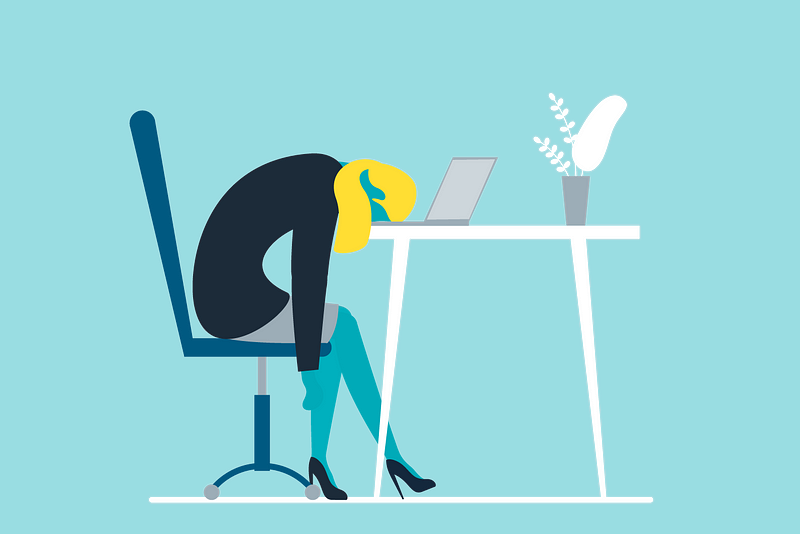Cheer-Ups
Tips for managers of remote workers during stressful times.

By Kristie J. Loescher
Writing about stress in the middle of a pandemic feels a little like trying to give diet advice in a doughnut factory. However, the stress inherent in our lives today as managers of (now) remote workers colors every decision and reaction.
To give you a useful list of tools and tasks for encouraging positive mental health, here are some CHEER-UPS that you can use and share with your employees:
Connect
First, make sure your remote employees have clear, consistent direction about their tasks, priorities, and expected deliverables. Focus on communicating regularly and asking for feedback from your team on their perceptions of role clarity and workload.
Second, decrease the social isolation typical of remote work and exacerbated by stay-at-home orders. Offer a range of opportunities to connect: virtual happy hours, lunches, book clubs (work-related books or not), contests, virtual background theme days, centralized help wiki/discussion boards, a place for employees to post questions and get answers, and small gestures of appreciation such as gift cards for coffee or cookies.
Help
Bring your organization’s employee assistance program out of the shadows. Send resource links and display them prominently on the company’s employee page. Let people know that almost everyone is dealing with stress, anxiety, and loneliness — encourage conversation and connection to telecounseling resources.
Help others. Often the best cure for our own blues is to get outside ourselves and help someone else. Consider adopting a cause and providing virtual volunteerism — calling neighbors, supporting the local food bank, delivering groceries to elderly people, mowing lawns. Helping others and creating community will help with connection as well as brighten our perspective and help us to be grateful for what we have.
Exercise
Maintaining activity levels helps to keep the immune system working and boosts mental health. Encourage daily exercise breaks; identify meetings where seeing one another is not essential and make them “walk-and-talks.” Suggest employees volunteer to foster or adopt a dog that needs walking (and provides companionship). Identify free online exercise and yoga classes or offer connections to local gyms that have virtual classes. Regular exercise routines are a big mental health booster.
Eat Healthy
Weight gain is a concern for many, given the proximity of the refrigerator and the ability to wear sweatpants every day. Encourage employees to drink plenty of water and to make healthy food choices by sharing ideas for healthy snacks, food plan goals, and recipes.
Relax
Work-life balance is essential during stressful times. As the manager, you should strive to model healthy behavior by setting your own start-stop times and encourage your team to do the same. Avoid emails or calls outside of work hours whenever possible. Recommend employees take mini-breaks during the day by moving between meetings and eating lunch on the porch or in another room. Finally, encourage downtime activities that provide mental breaks (and keep people’s hands too busy to snack) such as sewing, puzzles, crosswords, writing fiction or poetry, and painting or drawing. Consider having contests or displaying pictures of artwork, finished puzzles, and needlework in a virtual art gallery.
Give yourself permission to not be perfect. Be gentle with yourself when you make poor eating choices, don’t have the energy to exercise, or can’t stick to a structure. Our emotional reactions to transformational change come in waves, and we need to expect good days and bad days and cut ourselves — and our employees — a good amount of slack.
Unplug
The constant barrage of bad news about politics, lost jobs, and deaths weighs on our minds. If you see a team member struggling, suggest taking a break from news and social media — or at least limiting exposure. Spending the entire day sitting in front of a screen is hard on our bodies and our minds, so encourage your teams to build in space between meetings and use psychological segues — such as a 20-minute coffee break, a nap, or a walk — between tasks.
Positivity
Reminding ourselves of our blessings and a daily practice of mindful gratitude is a helpful mental health shield. Encourage daily journaling or meditation on gratefulness and blessings.
For situations outside of our control, share the 12-step program concept of a “God box.” Find a small box or container, write down your worries and concerns or unresolved conflicts, and put them inside. This physical exercise helps us manage those aspects of life that we cannot fix ourselves — at least not right now. Items must stay in the box for at least a week (a month for big issues) — then you can take them out and see whether your feelings about them have changed or whether an answer now presents itself.
Structure
One of the hardest things about remote work is the loss of structure and rhythm in our lives. To combat this unmoored feeling, the National Alliance on Mental Illness recommends creating a new structure and rhythm by sticking to a stable sleep schedule, setting work start and stop times, and keeping a to-do list for tasks .
Overall, remember primarily to look for the positive; as J.R.R. Tolkien wrote in The Fellowship of the Ring, “The world is indeed full of peril, and in it there are many dark places; but still there is much that is fair, and though in all lands love is now mingled with grief, it grows perhaps the greater.”
Kristie J. Loescher is a senior lecturer in the management department at the McCombs School of Business.


